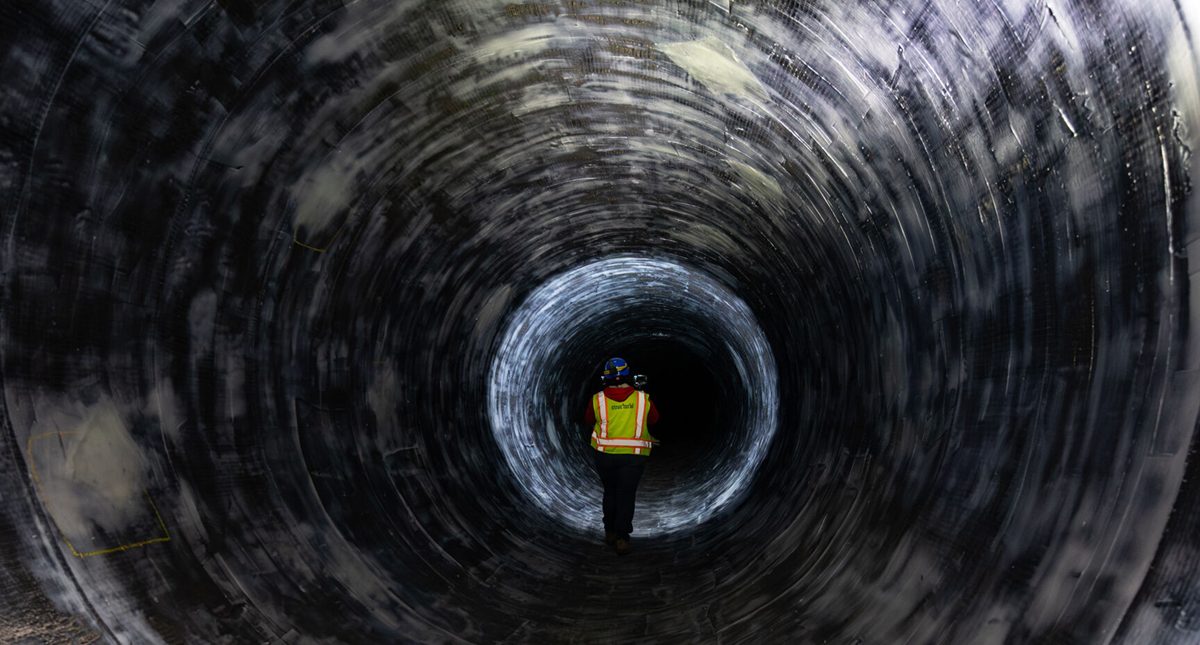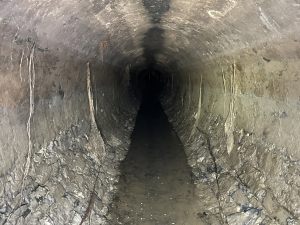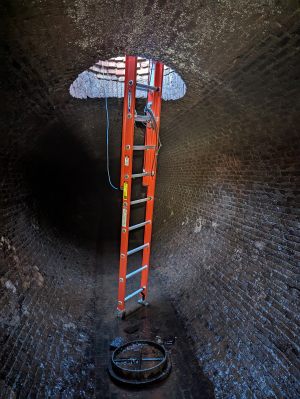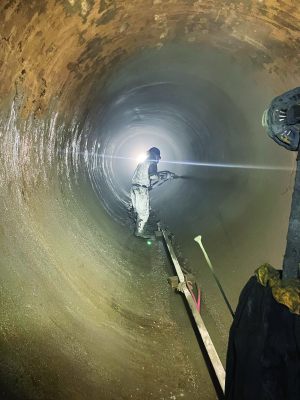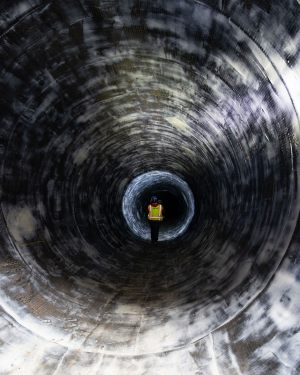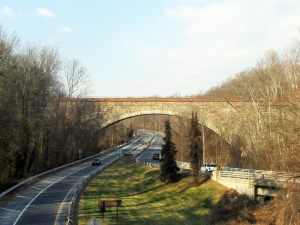Old Conduit Pipeline Strengthening
Solutions: Shotcrete, StrongPIPE® V-Wrap™ Carbon Fiber System
Key Stats:
-
- ICRI Award of Excellence in the Water Structure category
- 5-ft diameter pipeline
- Delivers approximately 100 million gallons per day (mgd) of water
- Over 370,000 SF of shotcrete applied
Location: Bethesda, MD
Owner: US Army Corps of Engineers (USACE)
Specialty Contractor: STRUCTURAL
Engineer of Record: Nova Consulting, Hazen & Sawyer
Investigation Sub-Consultant, Material Supplier: STRUCTURAL TECHNOLOGIES
Originally constructed in the 1850s, a 10-mile aqueduct, also known as the “Old Conduit”, serves as a critical component of Washington, D.C.’s water infrastructure. Operated and maintained by the Washington Aqueduct (WA), a division of the U.S. Army Corps of Engineers, this historic pipeline delivers potable water to the nation’s capital and surrounding communities.
STRUCTURAL TECHNOLOGIES conducted a detailed manual inspection combined with a comprehensive 3D laser scan, identifying approximately 12,000 linear feet requiring rehabilitation. One 300-foot segment showed significant structural deterioration and an elevated risk of failure.
Due to the pipeline’s location in a densely populated urban area, conventional repair methods were not feasible. A trenchless rehabilitation approach was selected to minimize disruption. STRUCTURAL, an exclusive licensee of STRUCTURAL TECHNOLOGIES, carried out the repair work.
Most of the pipeline was reinforced using a 2.5-inch unreinforced shotcrete liner. For the more deteriorated 300-foot section, six layers of STRUCTURAL TECHNOLOGIES’ StrongPIPE® V-Wrap™ Carbon Fiber System were installed. This advanced trenchless solution not only reinforced the pipeline but also extended its service life by over 50 years while accommodating the pipeline’s non-linear alignment and variable diameter.
To support the repairs, 22 staging areas were established along the route. Temporary utility lines supported shotcrete application while shallow trenching avoided road closures, maximizing productivity and minimizing disruption.
The project highlights how teamwork and advanced solutions keep water systems reliable and running smoothly.

